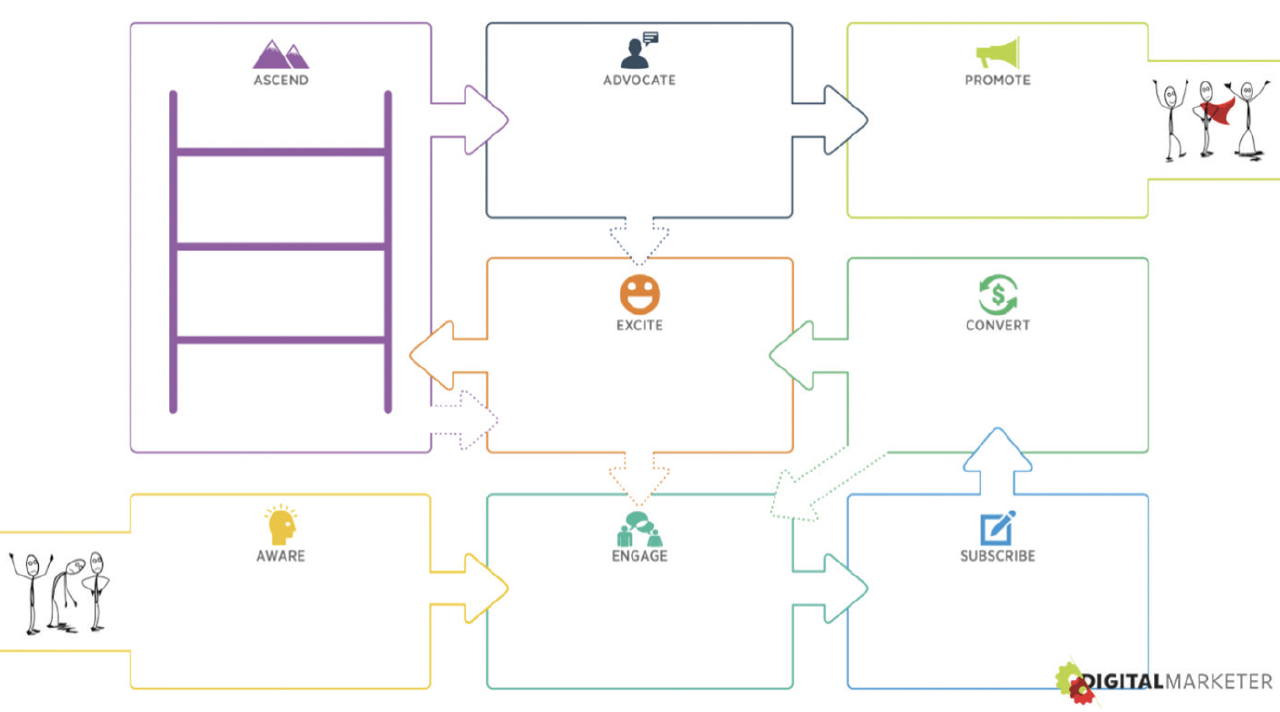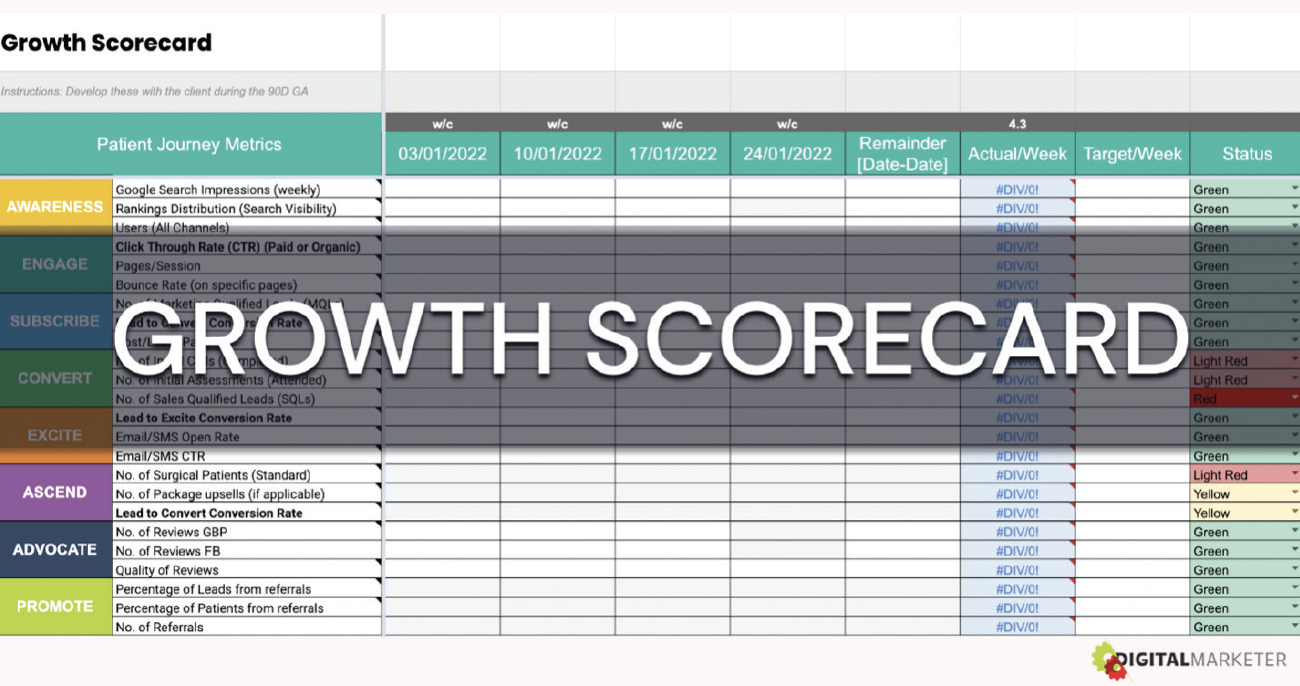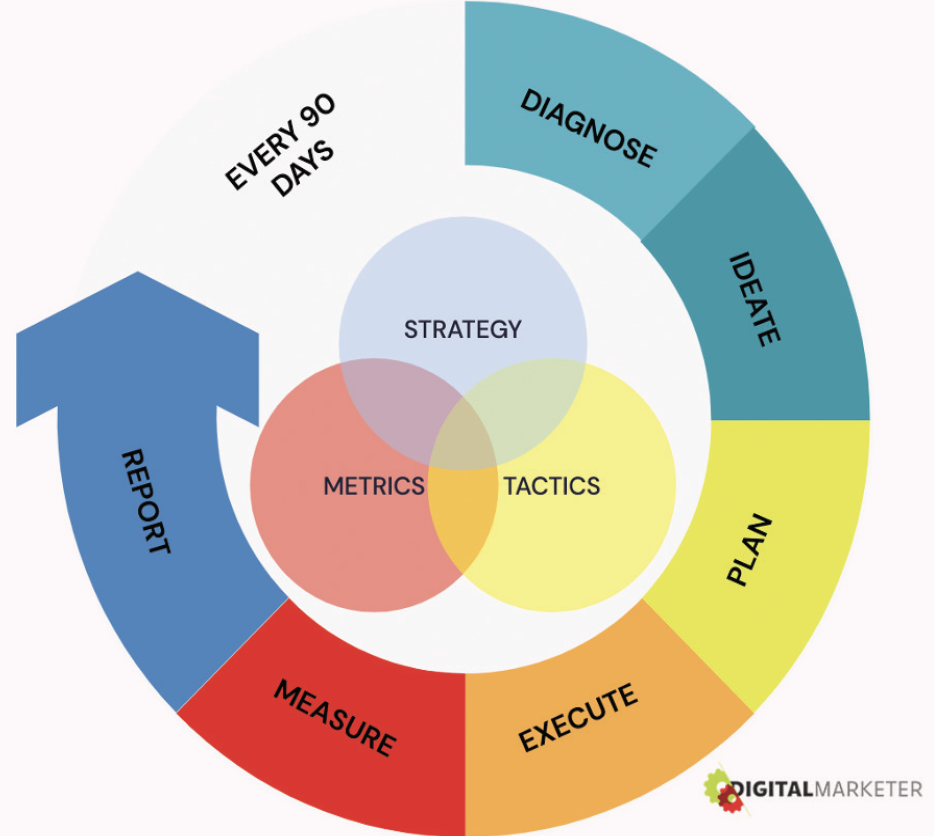

Bavid Packard, cofounder of Hewlett Packard, said, “More businesses die from indigestion than starvation.” Mr. Packard believed that business leaders who try to do too much at once lose focus and traction. He was describing what we call shiny object syndrome—the common tendency to continuously chase new ideas and opportunities without evaluating their benefit to strategic goals. Progress toward a goal slows, and a legacy of good ideas that rarely materialized may be forged. Shiny object syndrome is one of the biggest challenges that practice owners face. The problem can quickly lead to distraction and stress, and it can overwhelm staff and waste resources.
The growth triad is a solution to shiny object syndrome. Implementation of the formula provides a framework for imaginative visionaries to evaluate opportunities to determine which ones are worth pursuing (Figure 1). This article explains the fundamental steps we use to create predictable growth at ophthalmic practices around the world.

Figure 1. The growth triad.
Figures courtesy of DigitalMarketer Certified Partners
THE GROWTH TRIAD
Three elements. The first element of the growth triad is a documented strategy that summarizes how the practice can turn strangers into prospects, prospects into patients, and patients into raving (and referring) fans. Second are actionable metrics—what the practice must do and when. Third are marketing tools and tactics (eg, ads, search engine optimization, social media). Every vision correction practice, no matter its stage of development, needs the growth triad.
Stuck in the mud. Some practices with strategies and metrics fail to execute tactics. These practices know where they’re going, but they don’t have the tools or abilities to get there.
Bulls in a china shop. Some practices have a plan. They have lots of activities going on but little idea of what’s working and what isn’t. They’re not tracking results.
One-hit wonders. Most practices execute tactics and measure their results, but without a strategy, their tactics work until they don’t. These practices rely on what they cannot control. They have no unified framework for predictable growth.
CUSTOMER VALUE JOURNEY
Knowing how to convert strangers into fans of the practice is the key to creating predictable growth. We call this documented marketing strategy a customer value journey (CVJ; Figure 2). The CVJ delivers what every practice needs—a predictable flow of patients. Clinical staff members and marketing staff members work toward the same result, which is success for the patient. Because the goal is a success rather than a sale, the patient’s and practice’s interests are aligned. A CVJ also establishes a shared vocabulary for the practice’s employees (see Elements of a Customer Value Journey).

Figure 2. The CVJ.
ELEMENTS OF A CUSTOMER VALUE JOURNEY
A customer value journey should state in detail how the practice will do the following:
- Generate awareness
- Engage prospects
- Get and convert leads
- Create excitement
- Close first appointments
- Wow patients
- Generate referrals
A CVJ should be a living document that exists on 1 page. A separate CVJ is created for every patient segment, including one for young patients with myopia, one for middle-aged patients with presbyopia, and one for cataract surgery patients.
SCORECARD
Marketing analytics can cause information overload, so we recommend creating a growth scorecard (Figure 3). The idea is to measure only one to three metrics per stage of the CVJ. This can help focus attention on what matters most instead of irrelevant statistics. We also recommend setting a monthly target for each metric and checking the practice’s performance against the target each week. The practice receives a grade on each metric every month. A traffic system works well for this—green for good, yellow for okay, and red for poor. Scores are logged into a spreadsheet and reviewed every 90 days.

Figure 3. Example of the growth scorecard.
WHAT MOVES THE NEEDLE
Tools and tactics are the most enjoyable aspects of marketing. Many practice owners and marketers want to place ads, create content, and run campaigns. It’s important, however, to allow the CVJ and growth scorecard to determine which tools and tactics are implemented.
The growth scorecard helps to identify the stage that is performing most poorly. The aim is to turn red scores into yellow scores and yellow scores into green scores. If more than one stage is in the red, optimize the stages of the CVJ in reverse.
One stage is given priority. Next, no more than three big initiatives are identified that are likely to move the needle on growth. We recommend choosing three initiatives that can be completed within 90 days. They can be a part of a larger project or an entire project.
The metric to be affected by the initiatives is then identified. What’s the actual number now? What’s the target? What’s the gap? Who will be responsible for the gap? At this point, the three initiatives are activated.
THE GROWTH FLYWHEEL FOR PREDICTABLE GROWTH
The process described earlier is repeated every 90 days. The practice’s weak points are identified, solutions are proposed, initiatives are planned and executed, and results are measured and reported. We call this iterative process the growth flywheel (Figure 4).

Figure 4. The growth flywheel.
As the scores on the practice’s growth scorecard improve, the targets change. What once was red becomes yellow, and what once was yellow becomes green.
CONCLUSION
Predictable growth isn’t the result of picking up every shiny penny along the sidewalk. It requires creating and adhering to a comprehensive framework. When each stage of the CVJ is optimized, growth can become inevitable.


